MXA MOTOCROSS RACE TEST: 2018 KTM 450SXF
Q: FIRST AND FOREMOST, IS THE 2018 KTM 450SXF BETTER THAN THE 2017 450SXF?
A: Yes, but it isn’t as dramatic as some of the yearly model updates that got the 450SXF to where it is today.
Q: WHAT CHANGES DID KTM MAKE TO THE 2018 450SXF?
A: Every manufacturer has to slow down when it comes to releasing significant model changes on a yearly basis. New models are expensive to develop. They put pressure on the dealer network—not just in stocking new parts, but in learning all the ins and outs of working on a new machine. In truth, KTM has made more model changes over the last decade than all of the other “Big Six” manufacturers combined. This was even more noticeable when the Japanese manufacturers hid during the economic recession while KTM went into overdrive. So, consider the 2018 KTM 450SXF a breather year for the 450SXF, but don’t think the KTM engineers sat on their hands. The 2018 KTM 450SXF has been improved for 2018. Here’s the list.
(1) WP AER forks. Even though the 48mm WP AER air forks were new in 2017, they got an updated air seal, air-side piston, rebound spring and a new piston and valving on the damping side for 2018.
(2) Shock. The valving on the WP rear shock has been modified to better match the re-valved front fork.
(3) Radiator guards. KTM has redesigned the radiator guards to reduce the amount of trapped dirt on the bottom of the guard. The 2018 guards have holes in them to let dirt out. You can upgrade your 2017 radiator guards with a drill.
(4) Transmission. The transmission gets an updated C4 bearing that offers more overlap and improved reliability at high operating temperatures, plus all-new metal clutch plates made from nitrided steel for reduced wear on the steel clutch basket and a Metal Injection Molded (MIM) shift star for better wear characteristics on the shift mechanism.
(5) Battery. The electric-starter battery gets double the Cold Cranking Amps (CCA) thanks to the higher-capacity Sky Rich HJTZ5S-FP battery.
(6) Frame color. The previously black chromoly frame is powdercoated in Factory Team Orange and gets orange frame guards to match.
(7) Graphics. The redesigned graphics feature more orange and less white.
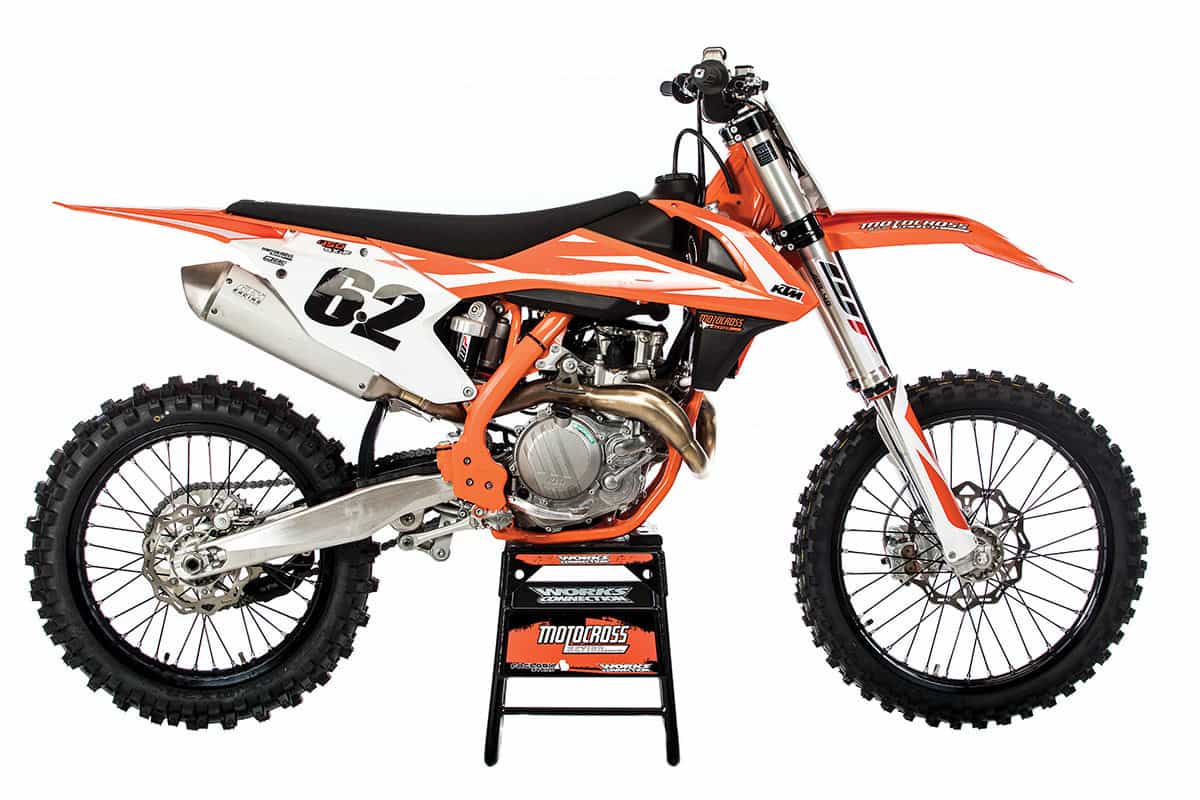 When the Big Four were scrimping on R&D money during the economic recession, KTM went into overdrive on development. The 2018 KTM 450SXF is the benefactor of that investment.
When the Big Four were scrimping on R&D money during the economic recession, KTM went into overdrive on development. The 2018 KTM 450SXF is the benefactor of that investment.
Q: WHAT DOES THE MXA WRECKING CREW THINK NEEDS TO BE CHANGED ON THE 2018 KTM 450SXF?
A: MXA test riders are a picky lot. Why wouldn’t they be? They race brand-new bikes every weekend, live with them during the week and learn the lessons of motorcycle ownership the hard way. Here is what we want KTM to change in the future.
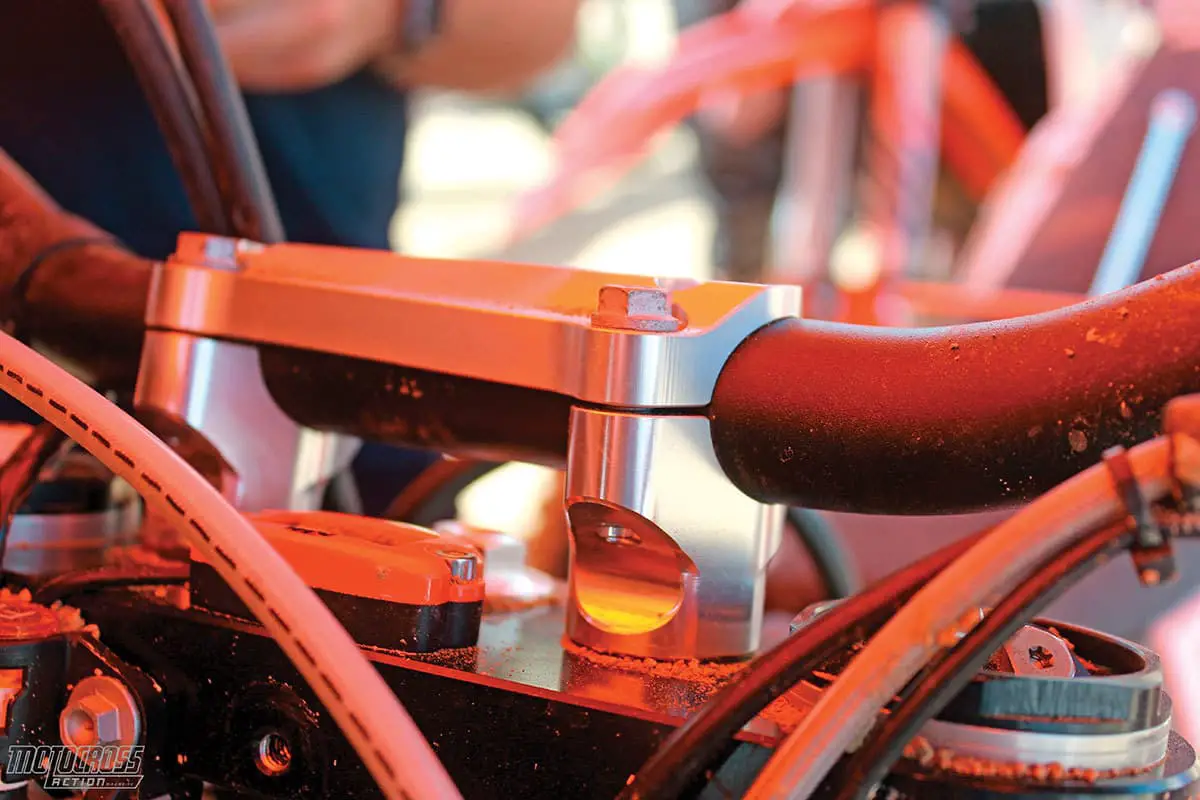 The one-piece top bar clamp can and will twist in crashes. We know.
The one-piece top bar clamp can and will twist in crashes. We know.
(1) Handlebar clamps. In 2016 the bars were mounted to a one-piece lower bar mount with two separate top bar-mount clamps. For 2017 the bottom bar mounts were changed to two separate pieces, while the top bar mount was one piece. Neither design is capable of stopping the bar mounts from twisting, deforming the rubber inserts or bending the one-piece bar mounts. MXA’s solution is to run the 2016 bottom mount with the 2017–’18 top mount. That is backyard engineering. We think KTM’s R&D department could come up with something better. While on the subject of the handlebar mounts, the bolts that go downward through the bottom handlebar mount and triple clamp are not indexed to lock in place. Thus, if you try to tighten the bar mounts by turning the 17mm nuts underneath them, the bolts will spin. When the bolts spin, the handlebar mounts don’t get tight. To truly tighten the bar mounts, you need to insert a #45 Torx wrench through the bar mount to hold it while you turn the 17mm nut. Life would be easier and safer if KTM indexed the head of the bar-mount bolt so that it can’t spin.
(2) Map switch. We know that all of the KTM engineers and mechanics ride, but what we don’t know is if they have ever used a glove hand to engage Launch Control on a starting line while having to look over the front number plate to see if the indicator light is flashing. Our suggestion? Why not incorporate a separate Launch Control button—Lord knows that the KTM multi-switch is big enough to handle a Boeing 757’s flight controls. And while we are at it, why does KTM put the multi-switch next to the left grip and mount the kill button inboard? That’s wrong. There is no emergency that requires changing maps, but there are many desperate moments when riders are looking for the kill button.
(3) Fork compression clicker. Have you ever seen a KTM rider adjust the compression on his forks? He takes his index fingers and pushes the clicker with two hands. This is stupid. If the clicker arms were longer, the compression could be adjusted with one finger, flipped with a thumb or changed with a gloved hand. Even stranger, every aftermarket KTM compression clicker has the exact same-sized arms as stock, which means all you get for buying these clickers is anodized aluminum.
(4) Seat height. Modern motocross bikes are tall, and there is no reason for it. There is ample room for rear-wheel travel, ample room for the engine and ample room for the seat-to-peg relationship, so there is no reason not to lower the seat height by an inch or more.
(5) Exhaust pipe. KTM’s exhaust pipe is the subject of lots of discussion in the MXA workshop. First, the 2018 KTM 450SXF weighs 222 pounds, but the consumer can save as much as 3 pounds by switching to an aftermarket exhaust system. We are pretty sure that KTM could maintain durability and lose the same amount of weight. Second, you can’t remove the exhaust pipe on the KTM 450SXF without removing the shock absorber. Why? KTM saves money by building a two-piece exhaust system (head pipe and muffler). If KTM went to the three-piece pipe (head pipe, mid-pipe and muffler) that Pro Circuit, FMF and DR.D use, this would not be an issue. Luckily, in 2019 KTM will put a slip-fit in the pipe to allow the pipe to be removed easily. Third, although this only applies to the Factory Edition models, KTM specs an Akrapovic muffler with the stock head pipe, and the two aren’t the best possible combination. In multiple tests, every test rider preferred the stock muffler on the Factory Edition over the Akrapovic. It’s obvious that KTM spec’ed the Akrapovic muffler for name recognition, not performance.
(6) Fuel-pump relay. If your bike turns over but won’t start and you’ve checked everything, open up the airbox and check the fuel-pump relay (it has a blue cap). It hangs precariously from a rubber strap and is easily damaged if it falls off the rubber hook. If you find the fuel-pump relay hanging down, you may need to replace it. Heck, if your bike won’t start, it’s best to borrow a fuel-pump relay from another KTM rider to check if that’s the problem.
(7) Shock collar. Anyone could invent a better shock collar than the one KTM has—even worse, the 2018 Suzuki RM-Z450 copied KTM’s terrible idea. KTM’s engineers should look at Fox Factory’s or Enzo’s shock-collar ideas to learn that there are better ways to secure spring preload than a nylon ring.
(8) Air-fork Schrader valve. The position of the WP AER fork’s air valve is hard to reach, but the real problem is that the valve-stem cap is so small and hard to remove that it almost always falls in the recessed cap of the AER forks, where it has to be fished out with dainty little fingers, which we don’t have. WP doesn’t have to redesign the forks—just find a valve-stem cap that sticks up higher.
(9) Front master cylinder hose. Always use soft straps. If you hook a metal tie-down hook onto your handlebars and hit a bump in the road, the tie-down hook can crimp the metal tube that comes out of the front master cylinder. We have seen front master cylinders with the tube kinked in the middle.
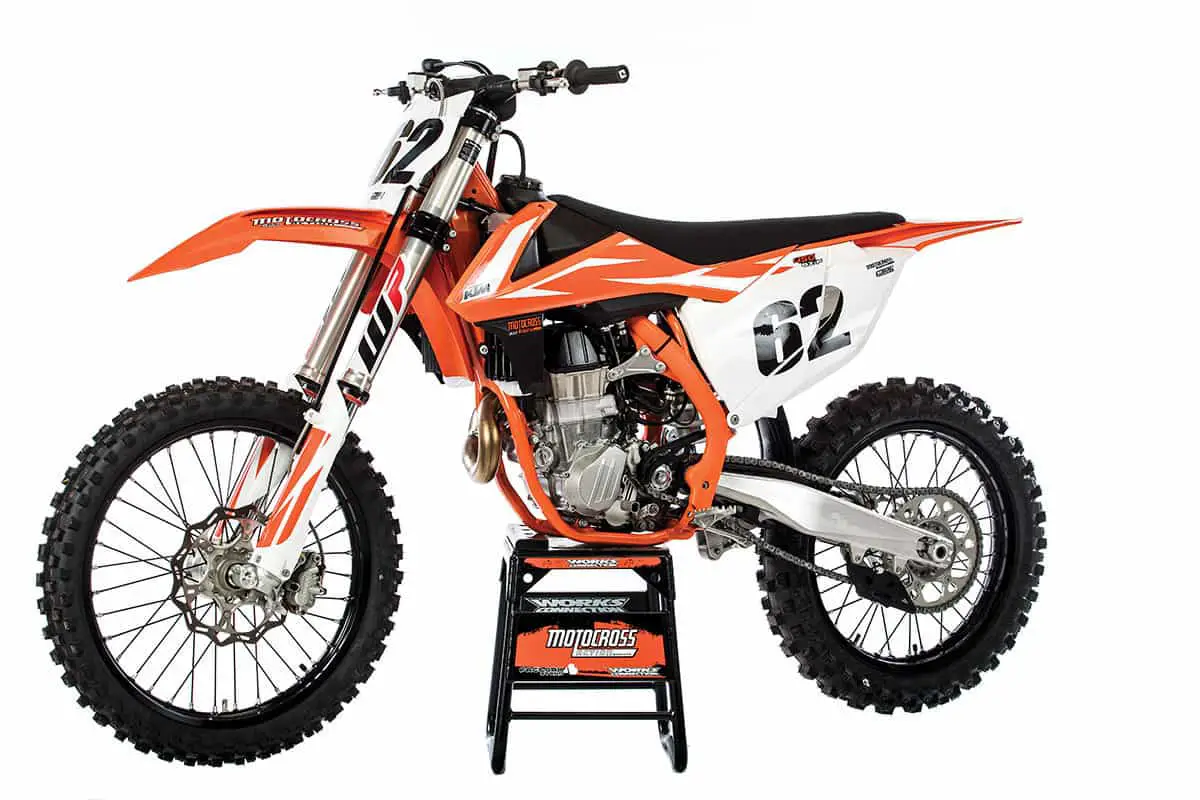 Only one bike can have the lightest weight, strongest brakes, broadest powerband, best clutch, most refined handling and straight-line stability. That bike is the KTM 450SXF.
Only one bike can have the lightest weight, strongest brakes, broadest powerband, best clutch, most refined handling and straight-line stability. That bike is the KTM 450SXF.
Q: WHAT’S GOOD ON THE 2018 KTM 450SXF?
A: We just listed everything that we don’t like on the 2018 KTM 450SXF, so here is the list of things we liked.
Powerband. The best word to describe the 450SXF’s power is “luscious.” It pulls longer than any other engine on the track yet feels super manageable. It has the ability to be kitty-cat nice when you want it to be, but panther-powerful if you get on it. With almost 58 horses, it is no slouch at any rpm, but it can be Novice-slow or Pro-fast without either rider ever complaining. Most MXA test riders wish that it was a little stronger and quicker from low to mid, but the Vets and old-timers who race the bike think it’s perfect. Most test riders believe that the KTM 450SXF revs farther, but actually it doesn’t rev any higher than any other 450. It just meters out the power so that it is more usable over a longer time frame.
Handling. It’s taken most of the world a couple of years to learn what most KTM owners discovered back in 2010. The KTM 450SXF is the best-handling bike on the track. If you are one of those people who favor quick turn-in over everything else, buy a Suzuki RM-Z450 (and give up stability, accurate tracking and a chassis that responds to minimal inputs). The MXA wrecking crew loves the neutral handling of KTM’s chromoly steel chassis. It handles instinctively. You just have to think about choosing a line and it takes it. There is one caveat. You have to fiddle with the fork-leg height to dial it in to perfection. One millimeter in either direction can make a noticeable difference, and it’s not unusual for an MXA test rider to come in from a race and slide his forks down to change the cornering habits for the next moto.
Shifting. Of all the bikes on the showroom floors in 2018, the KTM shifts the best. There are no sticking gears, false neutrals or missed upshifts. It grabs gears, and as a plus doesn’t need to be shifted as often as the average bike thanks to the broad powerband.
Clutch. The clutches on Japanese bikes are the best technology that was available in 2006, but they can’t hold a candle to the durability, reliability, lifespan and self-adjusting capabilities of KTM’s hydraulic, Belleville washer-activated, diaphragm clutch. This clutch is head and shoulders above any other clutch made. First of all, the 450SXF comes with a steel clutch basket that never notches and will last as long as you own the bike. Second, when KTM machines the steel clutch basket, it CNC-machines the primary gear into the clutch basket’s billet. Japanese bikes rivet a separate primary gear to the back of their cast-aluminum clutch baskets. Third, because the KTM diaphragm clutch is activated by a Brembo master cylinder and slave unit, it self-adjusts. You never come in from a moto on a KTM and have to spin the clutch-lever adjuster because the play in the clutch lever got tight during the moto. KTM’s hydraulic clutches take up the slack or feed slack in based on what the clutch needs. Fourth, unlike a clutch with six separate coil springs, the 450SXF’s clutch uses one large Belleville washer. The cupped Belleville washer acts as a spring that provides equal pressure across the face of the pressure plate. KTM’s Belleville washer clutch will save you money in the long run. KTM’s clutch plates last much longer than Honda, Yamaha, Suzuki or Kawasaki clutch plates. Riders who burn up KX450F, CRF450, YZ450F or RM-Z450 clutches in two motos will go months on KTM’s plates. This is a clutch designed for clutch abusers, which makes it bulletproof for riders who know how to baby a clutch.
Brakes. The “Big Four” Japanese brands have been throwing 270mm rotors on their old-fashioned master cylinders and calipers to try to keep KTM’s Brembo brakes in sight. Big rotors do provide more stopping power and, if mixed with the proper piston sizes, can produce good all-around braking, but as they are set up now, they don’t. The Japanese brakes lack braking power initially and then suddenly grab. It is a very herky-jerky feel that often catches the rider by surprise. KTMs don’t have these issues. They can use a smaller 260mm rotor and get better modulation, more stopping power and total control with as little as one finger.
Forks. We think the WP AER air forks are the best air forks ever put on a production motorcycle. The only forks on the 2018 showroom floor that are comparable to KTM’s AER air forks are Yamaha’s 12-year-old Kayaba SSS coil-spring units. The forks on the 2018 Honda, Kawasaki and Suzuki are flawed, complicated or heavier. As air forks disappear from the showroom floors (only the 2018 KX450F still comes with Showa air forks), the WP AER air forks begin to stand out more and more. They are 3 pounds lighter than the standard-issue coil-spring forks and still have all of the benefits of air forks without any of the Showa TAC or Kayaba PSF baggage.
Weight. At 222 pounds, the 2018 KTM 450SXF is 9 pounds lighter than the KX450F, 17 pounds lighter than the YZ450F, 18 pounds lighter than the CRF450 and 19 pounds lighter than the RM-Z450. Don’t delude yourself into believing that weight doesn’t matter. It does, because every working part of the machine is lugging that weight around, trying to get it to stop, working hard to get it going or attempting to absorb big hits. Don’t think that weight is your friend, because if it were, then factory teams would not spend so much money trying to get close to the AMA’s minimum weight for 450s, which is 220 pounds.
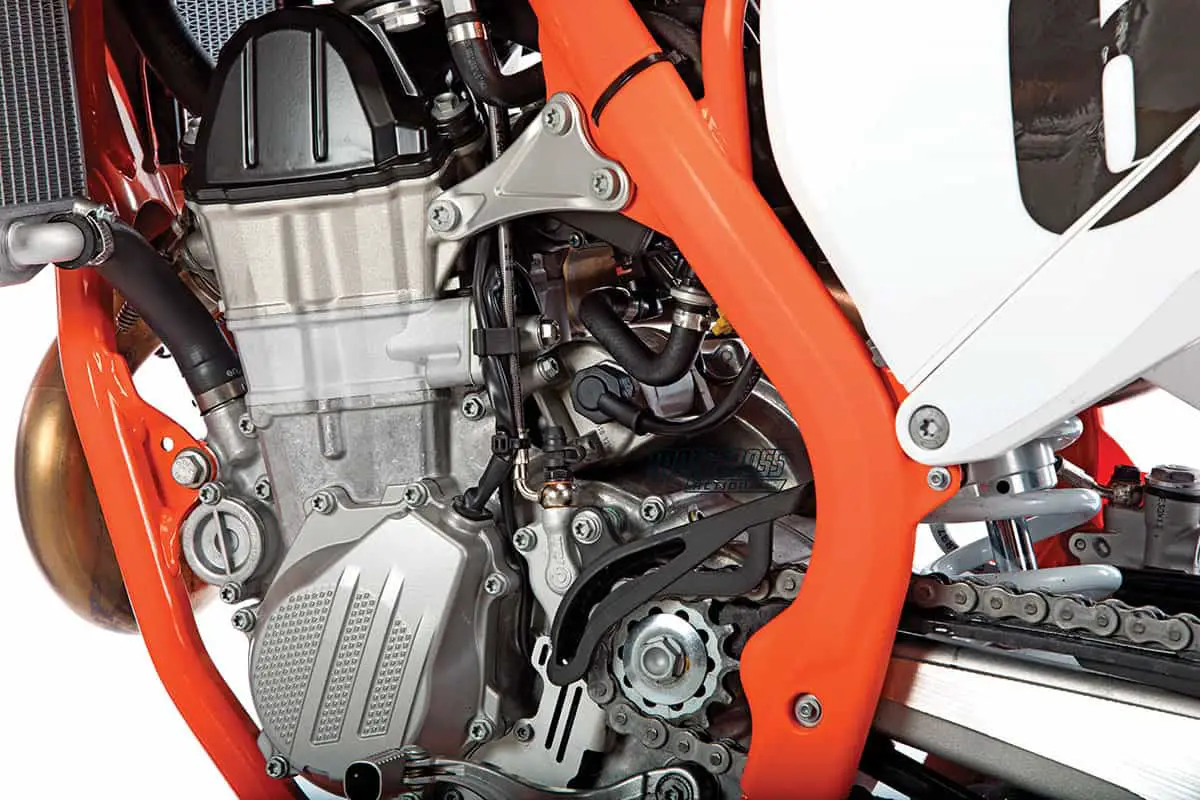 The 2018 KTM 450SXF delivers its power like a time-release capsule. The goods just keeps oozing out over a long time period.
The 2018 KTM 450SXF delivers its power like a time-release capsule. The goods just keeps oozing out over a long time period.
Q: HOW FAST IS THE 2018 KTM 450SXF?
A: The KTM 450SXF has the broadest power, the easiest-to-use power and a steady metronome-like power delivery that just keeps building speed; however, it does not make the most horsepower in 2018. That honor goes to the 2018 Honda CRF450 at 57.99 horsepower. The KTM 450SXF is just a tick behind the Honda on the dyno, but in action, the KTM’s power delivery feels much fuller, wider and more versatile. The 450SXF engine starts out mellow at low rpm and becomes progressively stronger as it goes. Fast riders can skip the low-to-mid transition and go straight for the mid-and-up power pulses; max power always seems to be waiting for you to call it off the bench. Half of the MXA test riders want more of the thrill ride—and they get this by adding one tooth to the rear sprocket to liven up the hit.
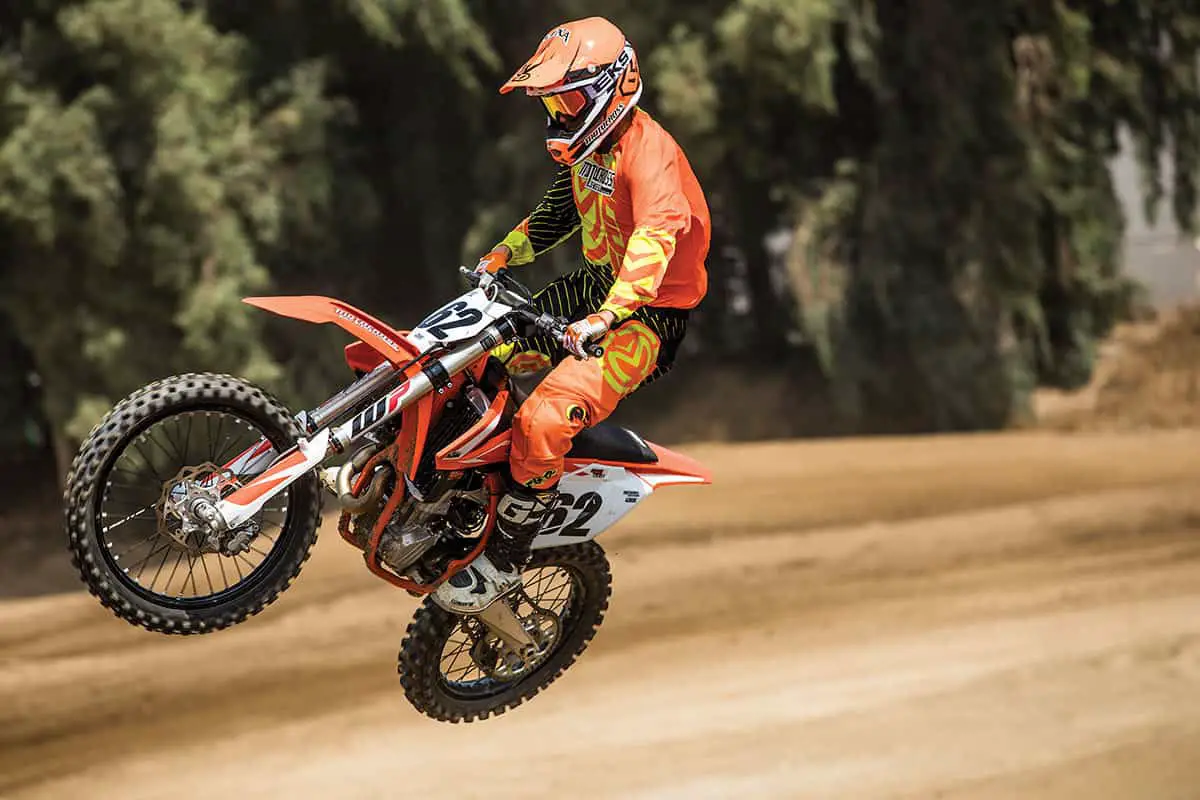 When flinging a 450cc motocross bike around a track, would you rather it weigh 222 pounds or 241? The weight may not matter to you, but we can tell you that the weight matters to your rims, spokes, fork springs, brakes and frame.
When flinging a 450cc motocross bike around a track, would you rather it weigh 222 pounds or 241? The weight may not matter to you, but we can tell you that the weight matters to your rims, spokes, fork springs, brakes and frame.
Q: WHAT DID WE HATE?
A: The hate list:
(1) Preload ring. Don’t hit the KTM preload ring with a hammer and punch. It will deform the nylon notches; instead, get a long screwdriver and pry against the notches using the frame as a fulcrum. If the shock is clean, it helps to turn the spring with your left hand.
(2) Fork-air bleeder. Even if you own a #20 Torx wrench, never use it on the air side of the WP forks. It will strip out. Just use a 10mm T-handle. On the left side, you have to use the #20 Torx. We swapped out the damping side Torx screw for the old-school Phillips screw from the 2016 KTM.
(3) ODI grips. We like the ODI lock-on grips, but the clutch side is locked on with a #15 Torx. If you want to change the grips, you have to have a #15 Torx.
(4) Exhaust. You can’t take the pipe off the bike without removing the shock.
(5) Gas cap. It sticks.
(6) Sprocket bolts. Watch the sprocket bolts closely. They come loose all the time (Loc-Tite or not).
(7) Spokes. Our KTM spokes never take a set. We check them constantly, even if the bike is just hit by a gust of wind.
(8) Front brake hose. We would prefer more room between the brake line and the bars to lessen the chance of damage.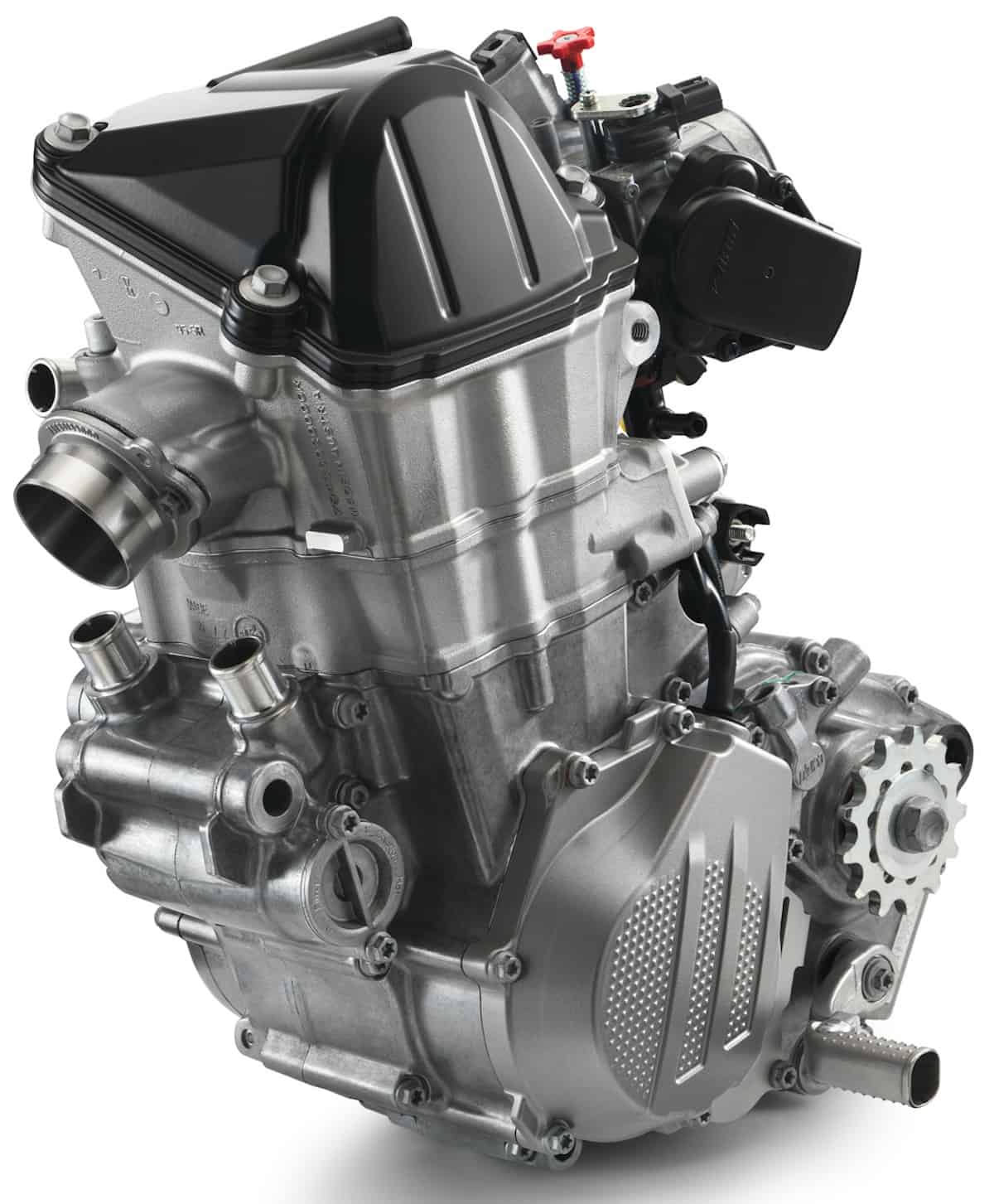 Q: WHAT DID WE LIKE?
Q: WHAT DID WE LIKE?
(1) Handling. This is the most natural-handling bike on the track. It needs the least input to get the most effect. The Suzuki may turn sharper, but it doesn’t have the balanced, do-it-all capabilities of the KTM chassis.
(2) Hydraulic clutch. This clutch will last a full race season without being touched.
(3) Powerband. Novice? This engine was made for you. Intermediate? This engine was made for you. Pro? This engine was made for Ryan Dungey, but you can use it too.
(4) Hour meter. Kudos to KTM for putting an hour meter on its bike as standard equipment.
(5) Weight. If you can find a 222-pound Japanese 450, look again, because the engine is probably missing. Riders used to dream about a four-stroke that was this light—and that was without an electric starter.
(6) Airbox. The air filter plugs into a hole in the side of the airbox. It can be changed in seconds without any wingnuts or thumb screws.
Q: WHAT DO WE REALLY THINK?
A: Nobody wants to buy a bike with the lightest weight, broadest powerband, incredible brakes, great suspension, hydraulic clutch, electric starting, easily accessible airbox, push-button-activated maps, steel clutch basket, effective launch control, perfect shifting, on-demand traction control and thought-control handling when they can buy a bike that doesn’t have any of those superlatives. Yes, you’re right, that is an implausible claim.
MXA’S 2018 KTM 450SXF SETUP SPECS
This is how we set up our 2018 KTM 450SXF for racing. We offer it as a guide to help you find your own sweet spot.
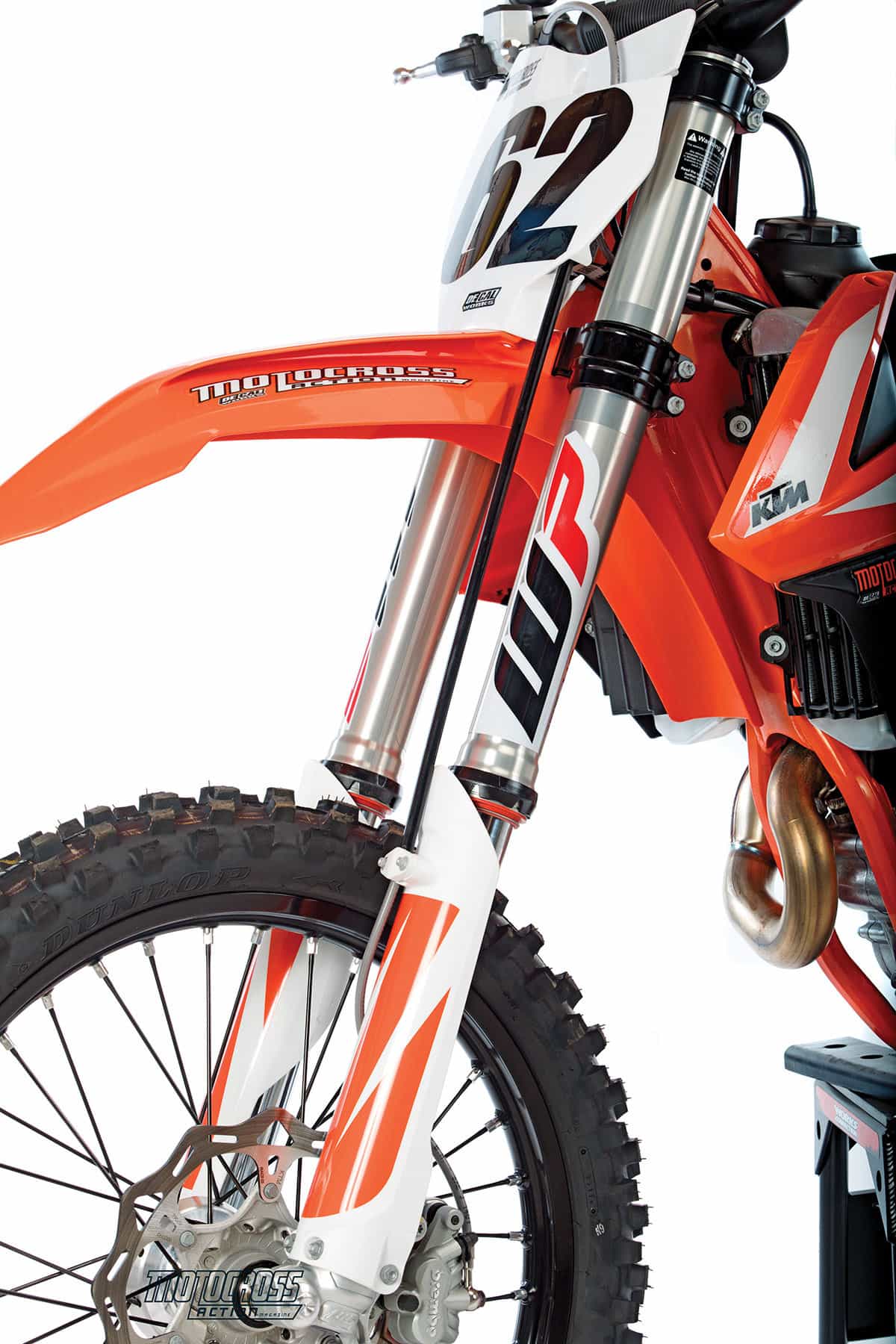 Air forks may be dead at the Big Four, but WP’s AER forks are better than the forks on the CRF450, KX450F or RM-Z450.
Air forks may be dead at the Big Four, but WP’s AER forks are better than the forks on the CRF450, KX450F or RM-Z450.
WP AER FORK SETTINGS
The 450SXF owner’s manual recommends 156 psi, but the majority of MXA test riders run pressures from 150 psi to as low as 130 psi. To find your perfect air pressure, put a zip-tie on one fork leg and go ride. If the zip-tie is 3 inches short of bottoming, lower the air pressure. Keep lowering it until you are 1-1/2 inches from bottoming. That is your air pressure. Remember that WP AER forks aren’t the same as Showa TAC or Kayaba PSF air forks; WP only uses the air pressure to replace the fork springs, not as part of a Gyro Gearloose experiment. Once you find your air pressure, use the compression clicker to control the travel. Don’t be afraid to go wild with the clicker. We have test riders who run it at 6 clicks out and test riders who run it 30 clicks out. The only thing to watch for is that the forks don’t drop excessively into their stroke. For hardcore racing, we recommend this fork setup for an average rider on the 2018 KTM 450SXF (stock specs are in parentheses):
Spring rate: 145 psi (156 psi)
Compression: 20 clicks out (12 clicks out)
Rebound: 15 clicks out (12 clicks out)
Fork-leg height: Third line
Notes: Pay attention to temperature changes. The fork pressure will climb as the day gets hotter and can increase as much as 4 psi after a long moto. Let the forks cool and reset the pressure after bleeding the outer chambers.
WP SHOCK SETTINGS
The stock 45 N/m shock spring is an excellent choice for the average 175-pound-or-under racer. If you are heavier than 180 pounds, you might want to run the 2016’s 48 N/m spring. This is a very good production shock. With the excellent AER forks holding up the front, the WP rear shock can shine. For hardcore racing, we recommend this shock setup for the 2018 KTM 450SXF (stock specs are in parentheses):
Spring rate: 45 N/m
Race sag: 105mm (110mm)
Hi-compression: 1-3/4 turns out (2 turns out)
Lo-compression: 15 clicks out
Rebound: 10 clicks out (15 clicks out)
Notes: We turned the high-speed compression damping in a little to lessen G-outs and ran a touch more rebound than the recommended setting. Additionally, we set the sag at 105mm instead of the WP-recommended 110mm.
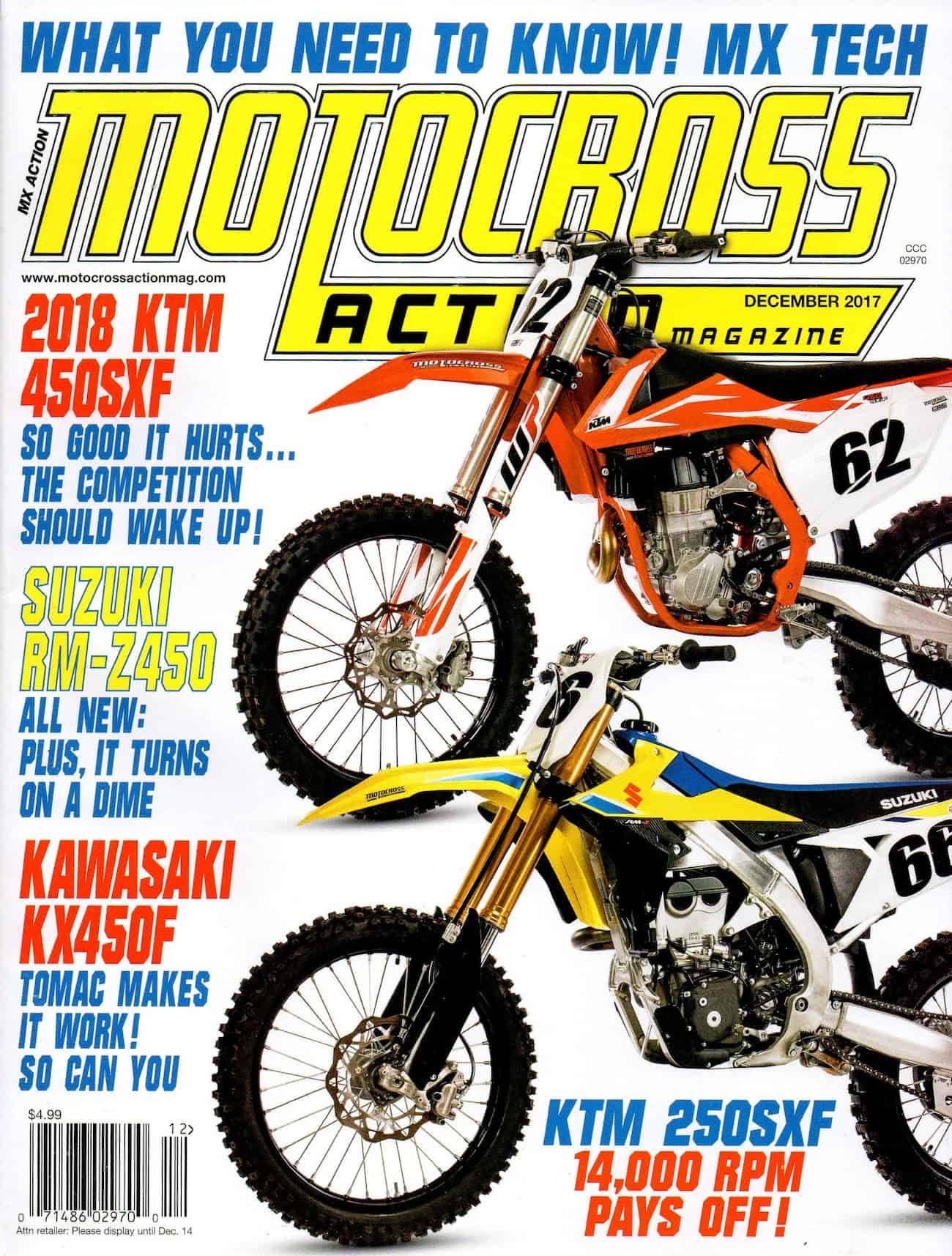 Had you subscribed to MXA, you would have read this complete bike test when in came out back in November. Click the box below to subscribe.
Had you subscribed to MXA, you would have read this complete bike test when in came out back in November. Click the box below to subscribe.


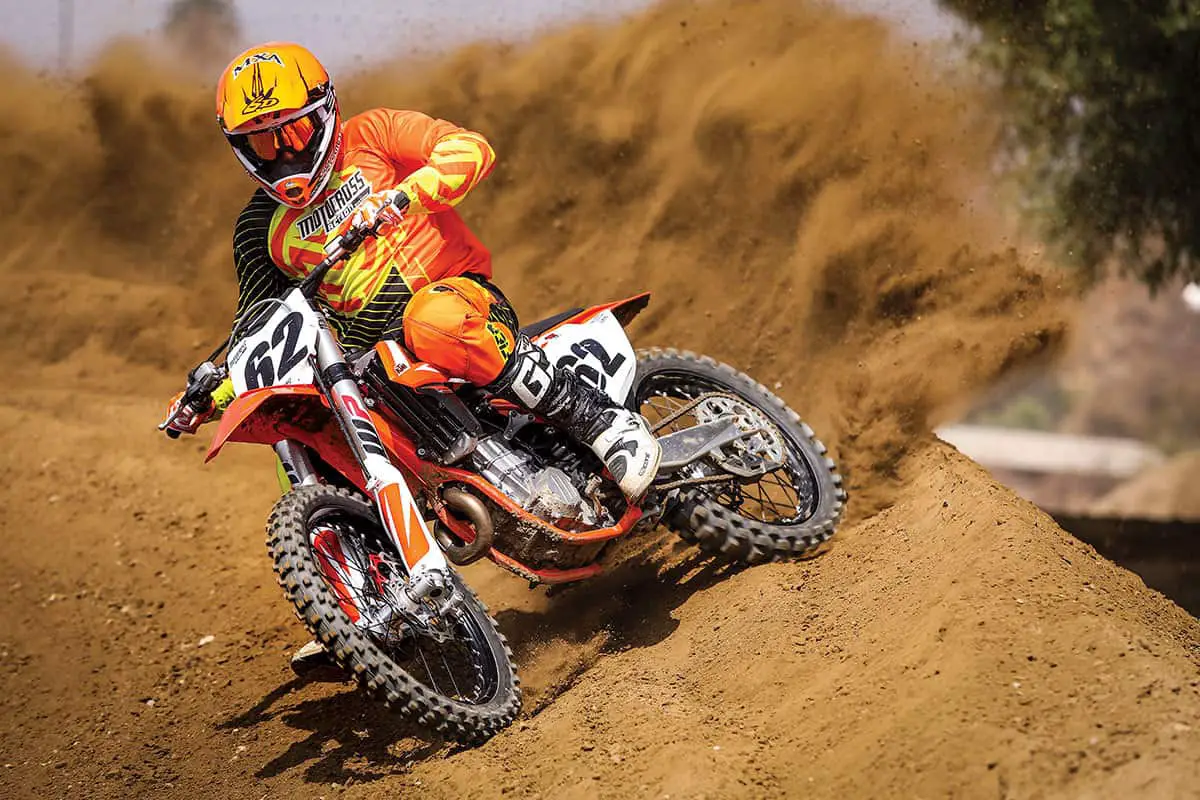
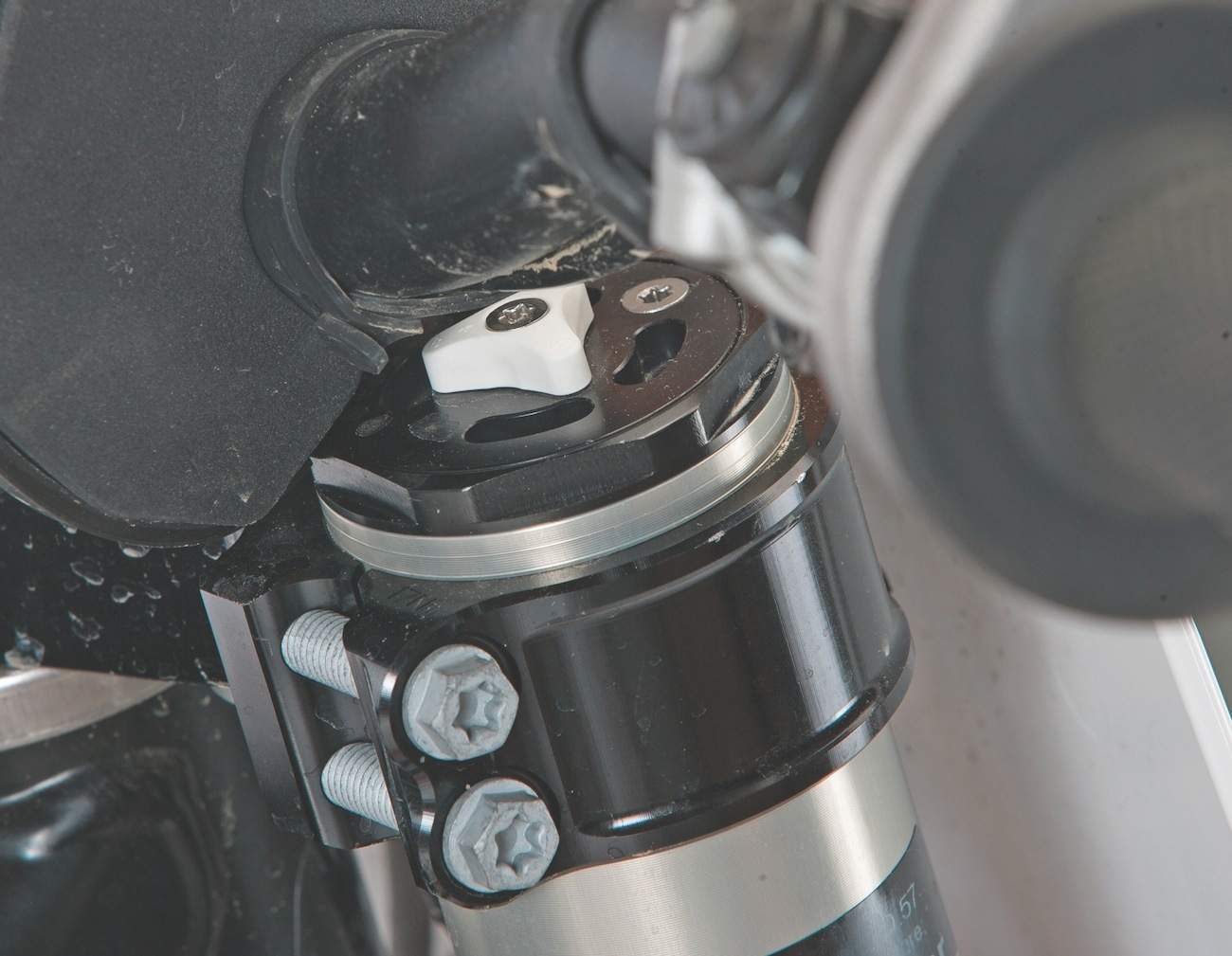

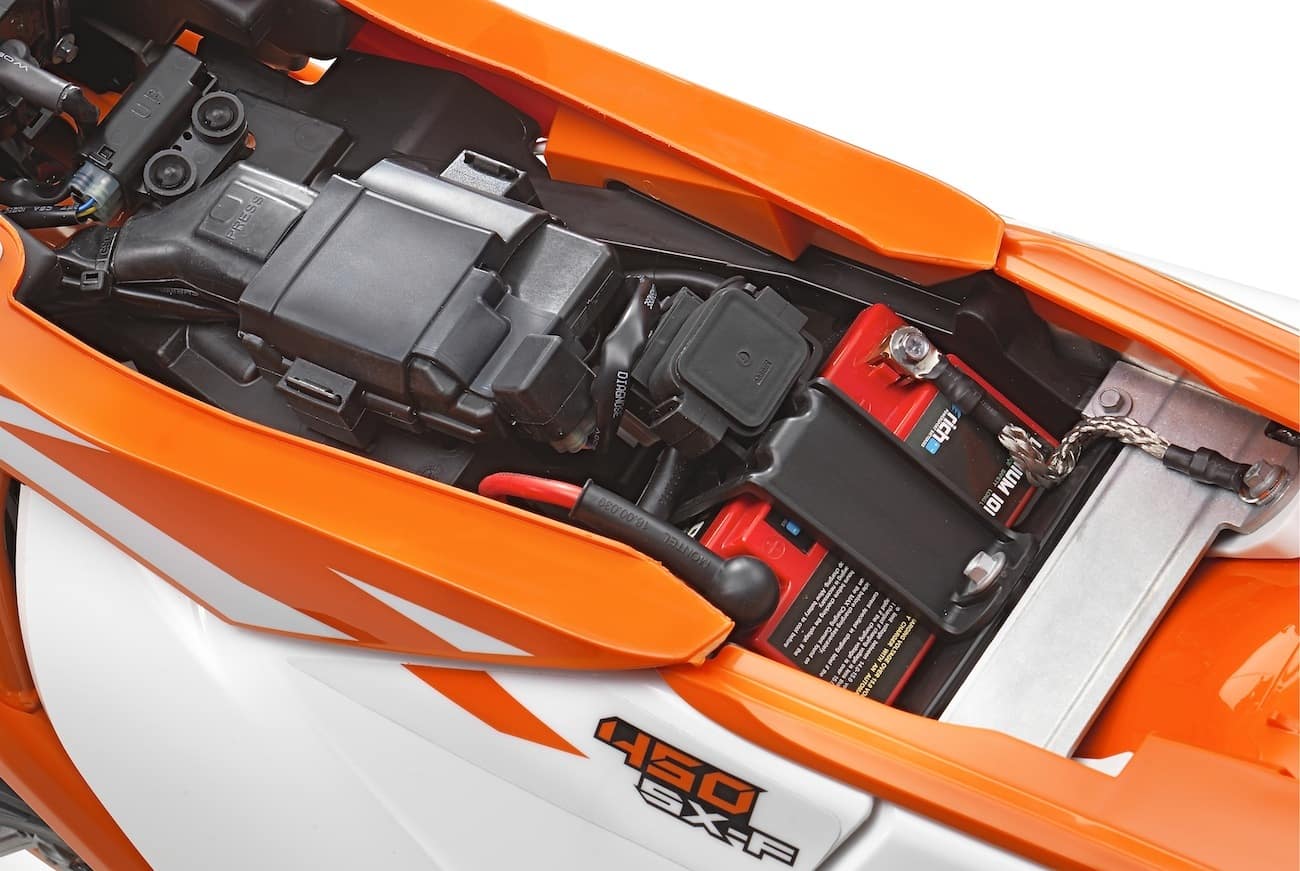

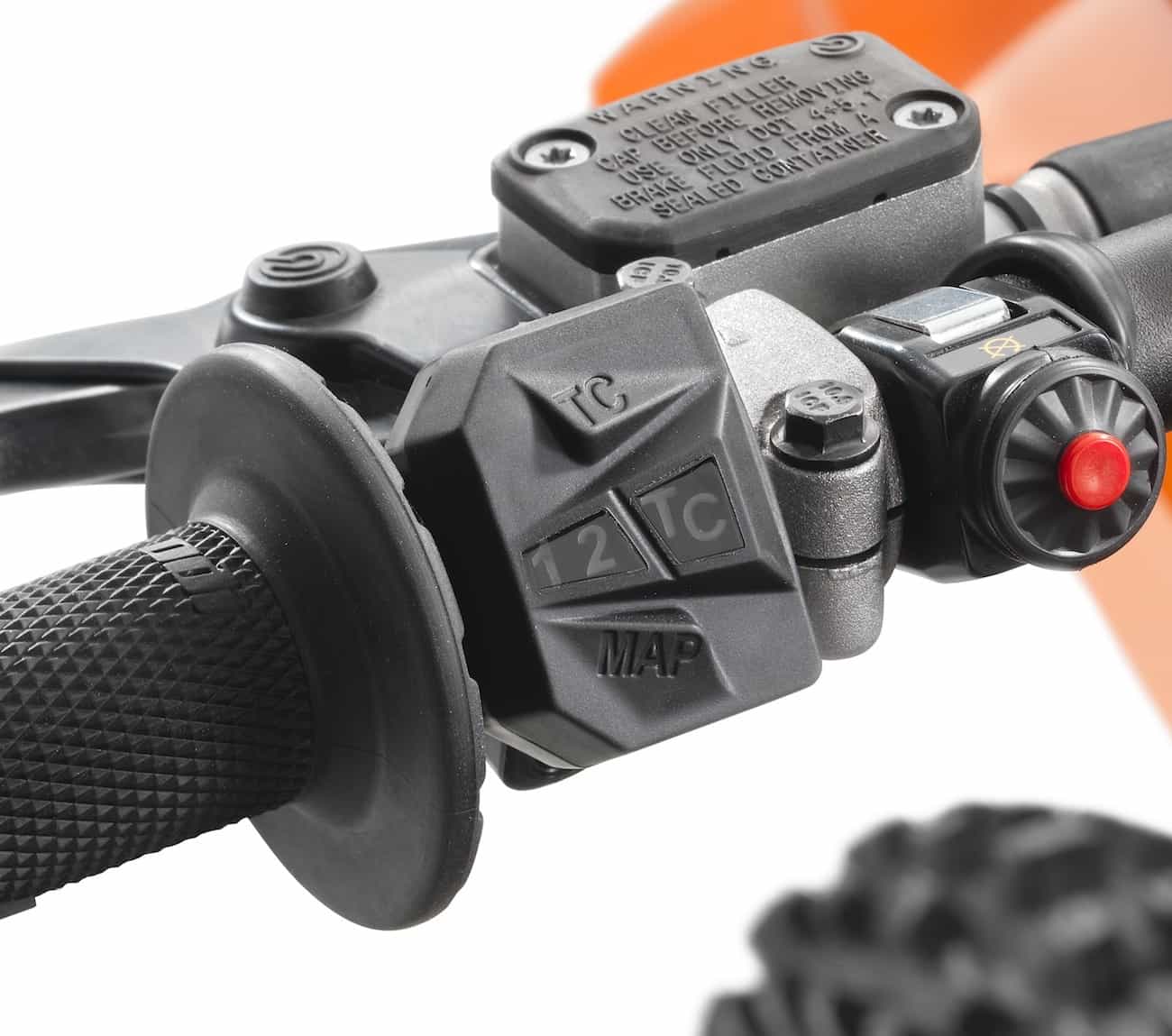
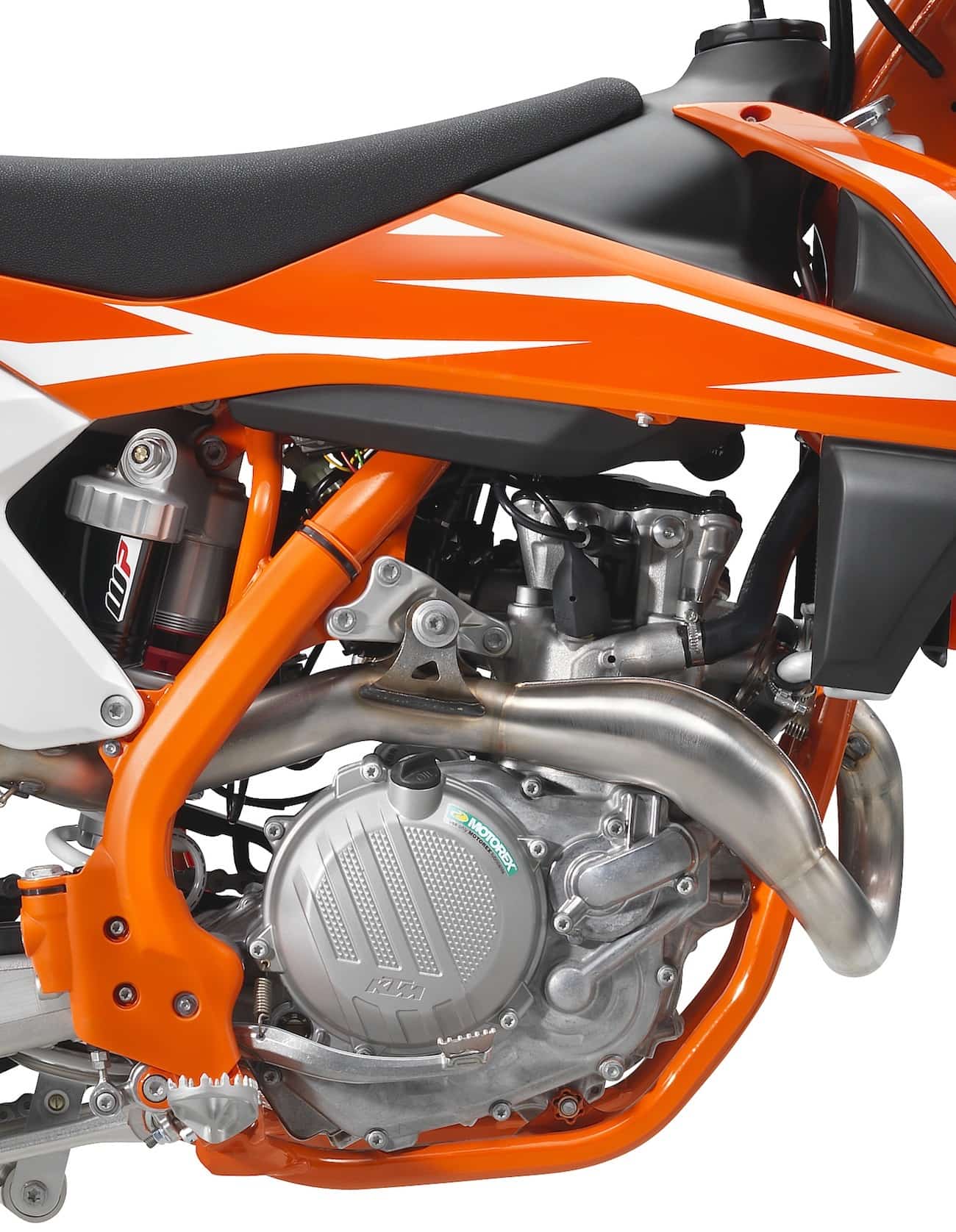
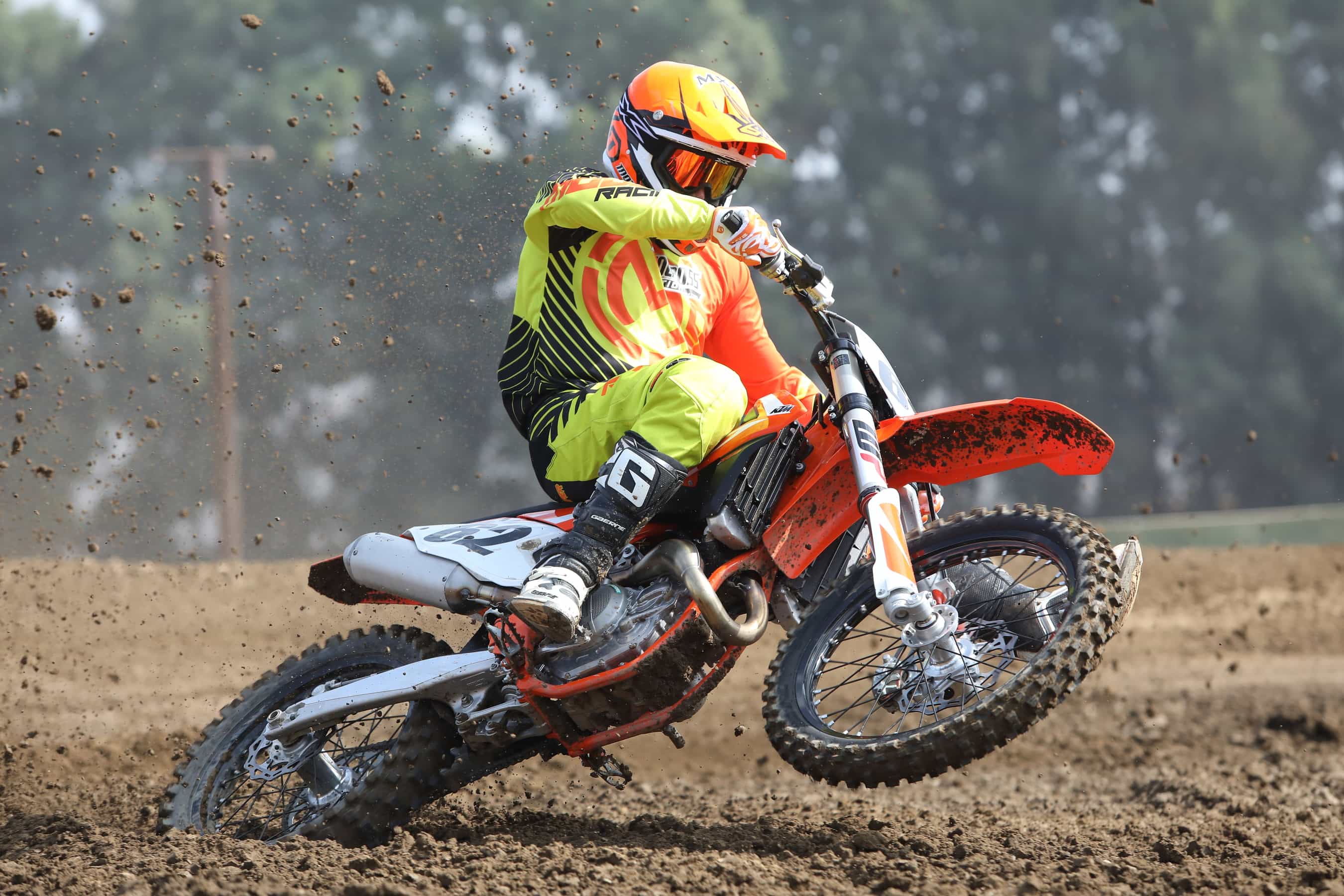

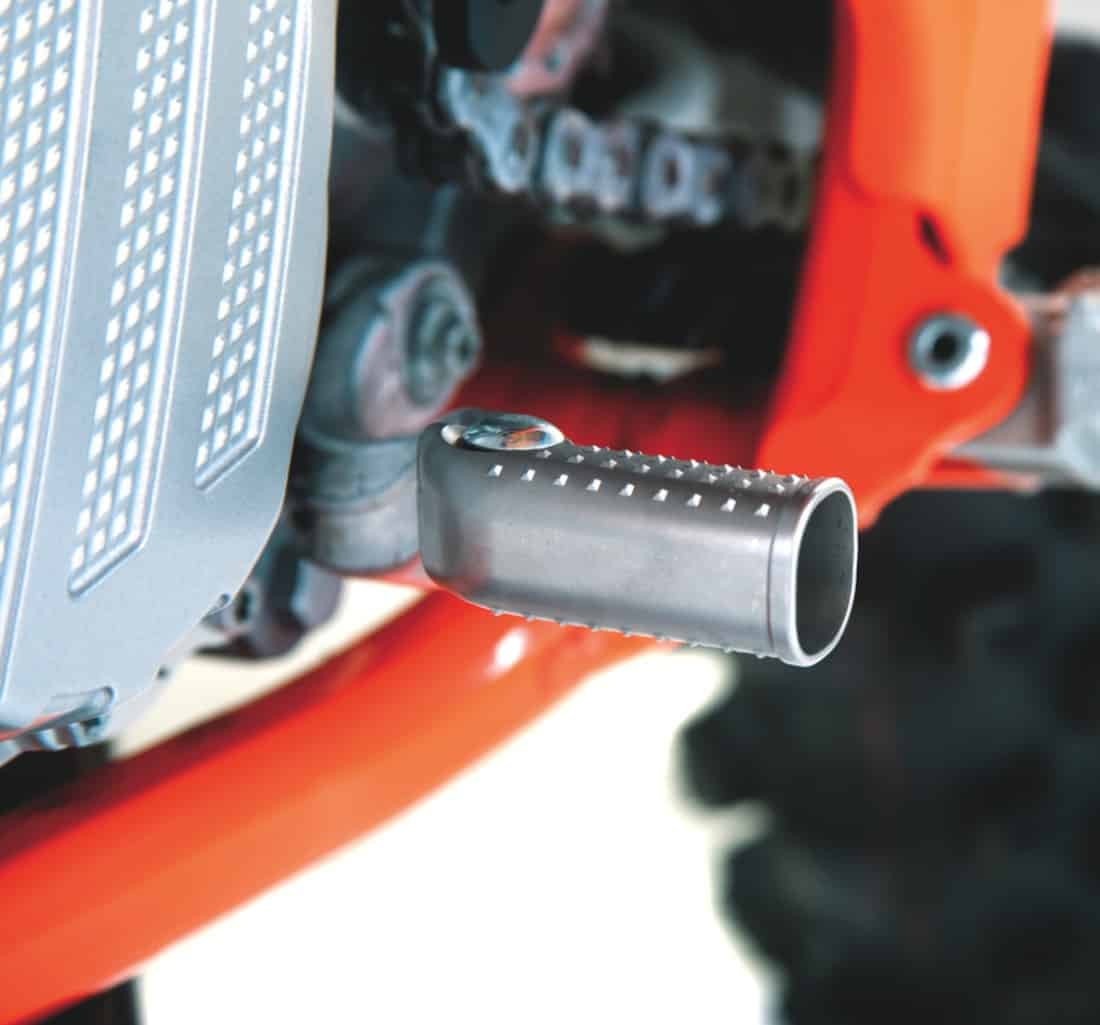


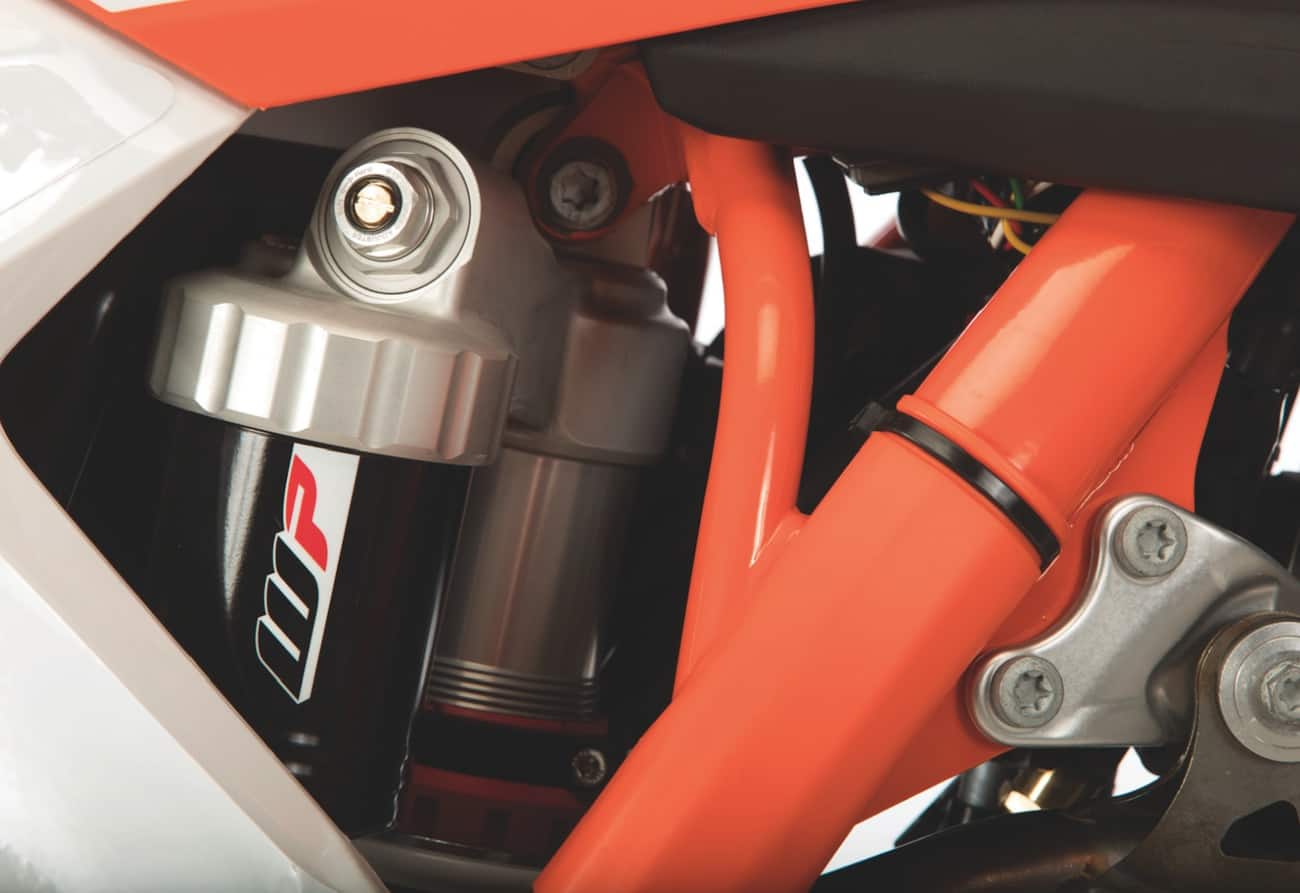



Comments are closed.